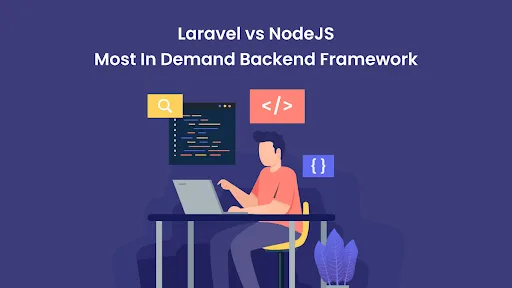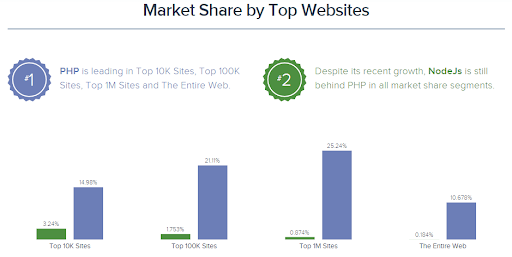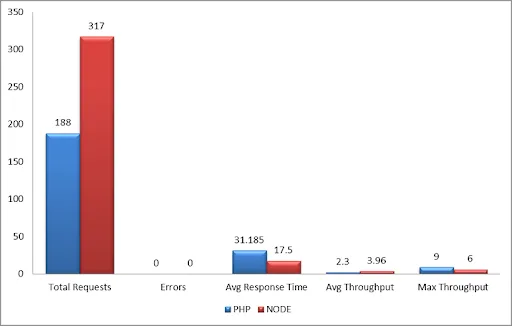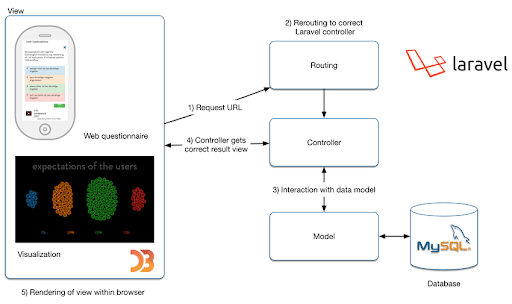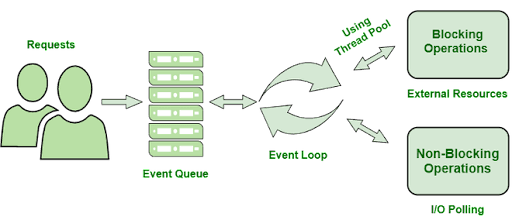In this fast-paced technological era, making your business available online, be it a website or a web app, has become crucial. For your web project, you must choose the appropriate framework. Software packages called web frameworks make it easy to create complex web apps. They also have numerous built-in features that shorten the time required for development. They thus make it possible for manufacturing to move quickly from the development stage.
Simply said, a web framework is a technology that supports the development of both simple and complex websites and web applications. Backend development frameworks that are based on the web include Laravel and Node.js. The following comparison of Laravel and Node.js can help you to see which one would be the better choice for your upcoming project.
Laravel
The open-source Laravel framework is renowned for its server-side management of HTML authentication, routing, and other functions. Laravel, developed by Taylor Otwell, is a PHP framework based on Symfony, which offers reusable PHP components and libraries. Laravel may be used to create full-stack apps and online portals with pre-defined architecture, custom backend logic, and templates. It can also be used to handle SaaS products because it is a server-side-based framework.
Laravel has a market share of 0.32% of all currently used web frameworks.
Node.js
Node.js is a large server-side runtime environment with built-in JavaScript Technology. The single-threaded process utilized for web loading and async programming is the reason for the framework’s success as a high-performance, scalable one.
Additionally, you may utilize it to improve a project’s backend functionality by integrating Nodejs-based frameworks including Express, Meteor.js, and Socket.io. The technology is renowned for developing websites, single-page applications, and backend API services because it was built using real-time and push-based architectures.
The majority of Node.js developers (85%) use it to create online apps, while 43% use it to create enterprise-level software.
Applications of Laravel
The majority of web application types are ideal for Laravel.
Database Administration
The best usage for PHP frameworks is managing databases. Laravel is the greatest choice for maintaining integrity if a website’s database is dynamic.
Learning Applications
Laravel makes it simple to create web applications for digital learning. When there is a lot of traffic, Laravel can manage repeated backend requests without any freezing.
Streaming Service
For creating streaming apps that distribute music and video content on the web, Laravel is a good choice. Additionally, it is ideal for apps like Twitch that make a lot of I/O requests.
Applications of Node.js
Not every framework is equally appropriate for a given task. What kinds of applications are possible to create with Node.js?
Real-Time
Real-time apps are where Node.js is most effective. Node.js is utilized by chat and email clients.
It uses few resources, loads quickly, and has a small carbon imprint. It’s best to use Node.js for managing big traffic volumes and various discussions.
Collaboration on a Project
The growth of remote work has given collaborative technologies a life of their own. The stability and speed of Node.js make it the perfect choice.
Node.js is perfect for usage with these apps because it leverages asynchronous I/O and even a based architecture.
The technology is so effective that difficult operations like revising an older message are now routine. Full-duplex transmission using web sockets prevent server freezing and ensures flawless data updating on all nodes.
Comparison between Laravel and Node.js
Performance and Speed
For minor projects, performance shouldn’t be a deciding factor, but it becomes crucial to take into account while developing large, complex projects. Therefore, let’s evaluate the performance of Laravel and Node.js.
Laravel: Applications built with Laravel are known to perform slowly, which may have an impact on a project’s success. However, according to the community, it may be adjusted properly for greater performance, which might enable apps to run quickly even at 20 ms.
Applications that use cache tags can load pre-stored data quickly, resulting in a quicker response time and better performance.
Node.js: Node.js provides the ideal environment for little jobs (micro-operations/tasks) that don’t interfere with the main thread of the application because it inherits from Javascript the asynchronous and non-blocking features. Additionally, multitasking is more effective and runs quickly with the V8 Javascript engine.
Unlike other backend solutions, the framework handles several requests at once. In fact, Node.js is becoming popular among tech titans due to its performance.
Application Architecture
It is crucial to select a framework that allows for flexibility rather than rigidly enforcing design and rules. In fact, a framework should always be used as a guide rather than techniques and standards. Having stated that, let’s compare Laravel and Node.js to each other and see if their architectures are versatile.
Laravel: The Model-View-Controller (MVC) architecture pattern, which Laravel adopts, allows for the separation of developer roles for a more pleasant development process. Therefore, a backend developer can work on the controller logic concurrently with a frontend developer who is working on the views.
The MVC patterns also provide you complete authority over the application, which can be useful if you want to select routes that are just applicable to your application or alter how it looks globally. Additionally, this boosts the application’s SEO. With Laravel’s MVC architecture, it is simple to implement external APIs and reuse application functionality. Therefore, every online application can always be built with immutable backend support.
Node.js: Node.js has a Single-threaded Event Loop design internally, which allows it to handle several concurrent requests quickly. To help with isolating and onboarding bugs in the application codebase, Node.js also supports the MVC/ MVP architecture paradigm. It also offers asynchronous communication between different components and generates several views of the same data.
Scalability
Making the appropriate framework choice is crucial since frameworks have a big impact on the scalability of online applications. Here’s how scalability differs between Laravel and Node.js.
Laravel: Applications that have been widely used for years and use Laravel can scale up without any restrictions. Since Laravel offers support for organizations with rapid growth, it inherits scalability from PHP. Laravel can accomplish significant horizontal scaling by picking a reliable database and load balancer.
Applications built using Laravel may grow flexibly to meet demand by using MySQL, and AWS, and applying advanced caching techniques.
Node.js: High-scalability applications are created using Node.js. Numerous simultaneous requests are handled via the event-driven architecture and non-blocking I/O. The server can process most requests thanks to the event-loop mechanism. Node.js also creates the best interoperability with microservices by breaking down apps into smaller pieces.
The work distribution amongst several development teams is effective in this way, allowing for the quicker and more scalable development of apps.
Testing
Your app development project must pass a number of tests to guarantee UI standard compliance, interoperability, and usability in order to function flawlessly under continual, high load and expanding market expectations. When compared to testing, here is how Laravel and Node.js differ.
Laravel: Due to the fact that Laravel runs on PHP, a variety of testing tools are accessible to guarantee the development of an application free of bugs. The sheer variety of testing-related tools and materials, nevertheless, can easily make one feel overburdened. Laravel tests code at two independent levels called Unit tests and Feature tests in order to make the testing phase more comfortable.
Laravel comes with a thorough testing manual by default and offers all the tools required to evaluate the environment of the application at various levels, including the capability to run mock tests by simulating application events and codes.
Node.js: With its extensive ecosystem of third-party packages, Node.js delivers sufficient testing and debugging capabilities. The testing environment for Node.js apps is well-established thanks to a variety of automated testing tools and frameworks like Mocha, Lab and Code, Jest, Jasmine, and AVA. Additionally, to give your users a flawless, error-free experience, you may use testing libraries like Mocha, Jest, and Chai.
Conclusion
The popularity of Node.js and Laravel among developers can only be generalized to one thing: both are equally popular.
A developer needs to look at specific requirements in order to use the framework efficiently.
You may hire Laravel developers or NodeJS developers depending on the specifications of your project. The main thing is that there is not a single framework that can be used to create every kind of web application.
It is not surprising that neither has any inherently good or bad characteristics. Both frameworks were created as a result of in-depth research and are now available to users.

